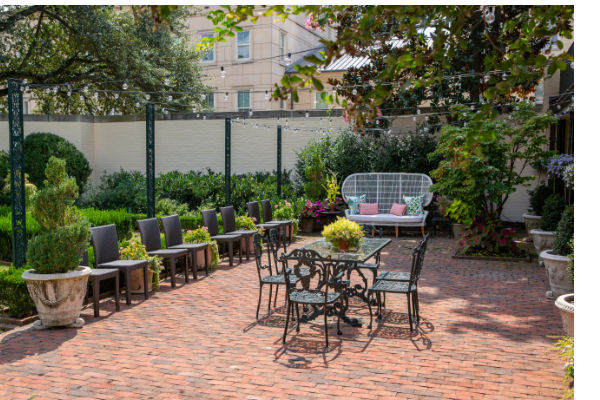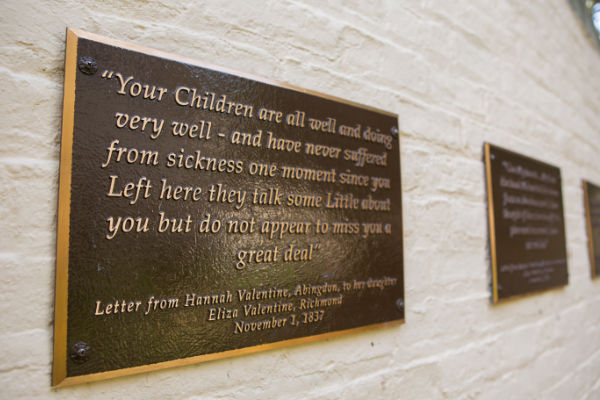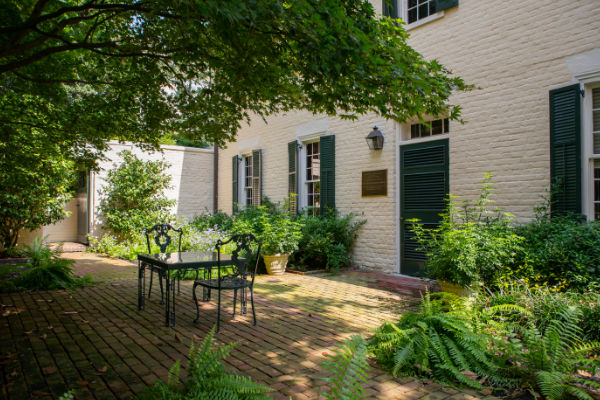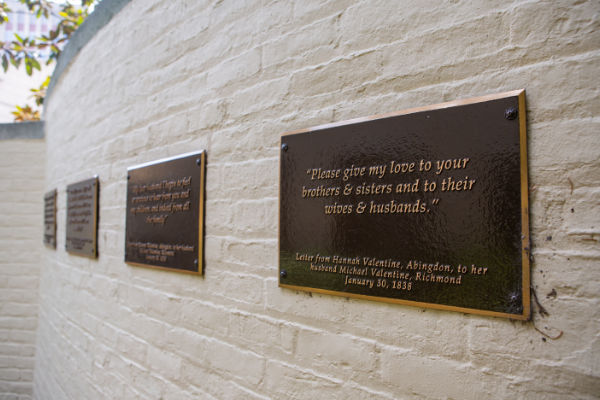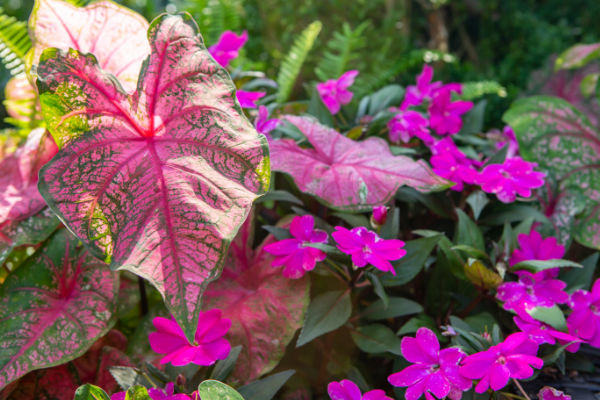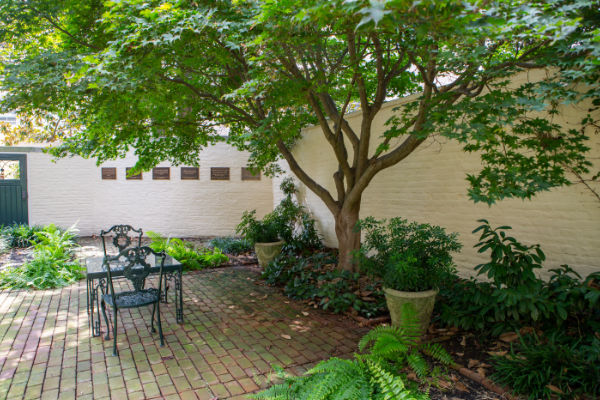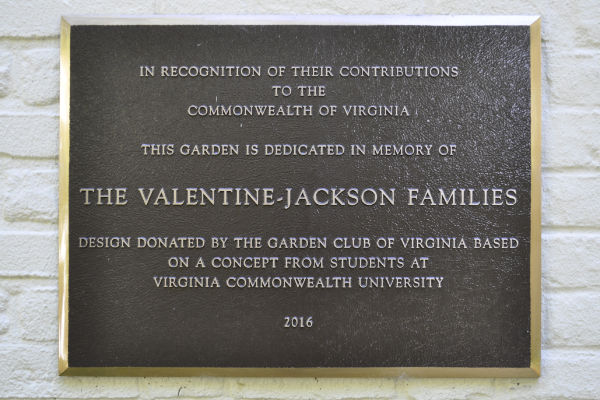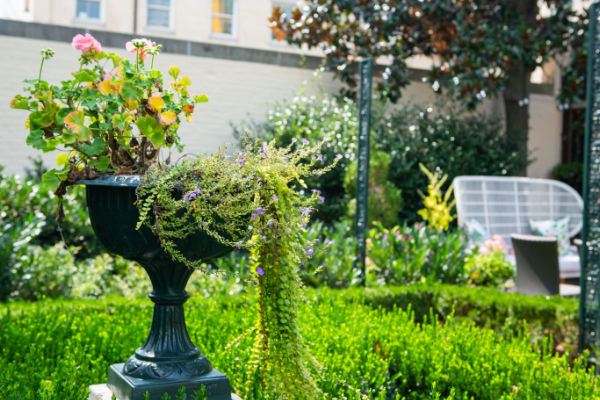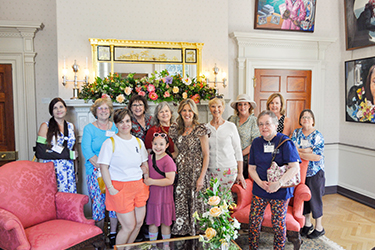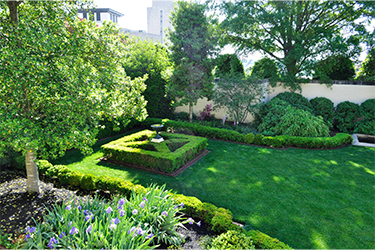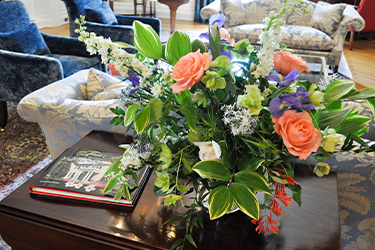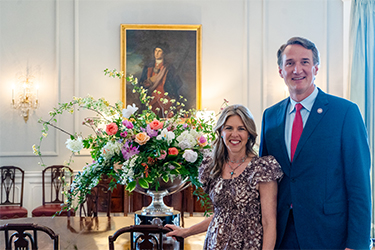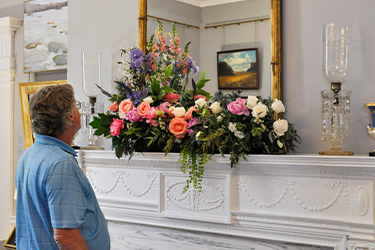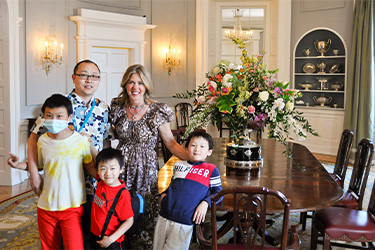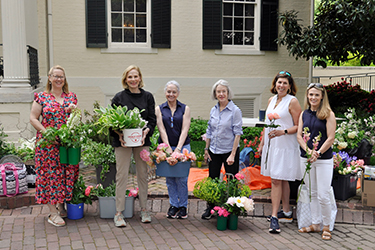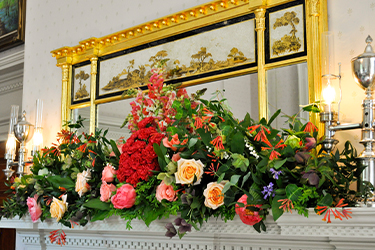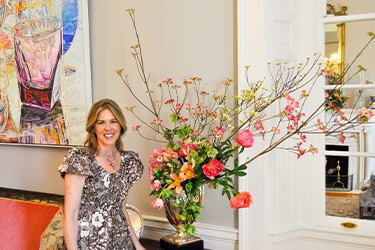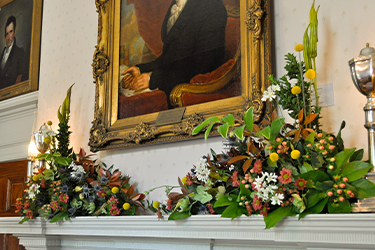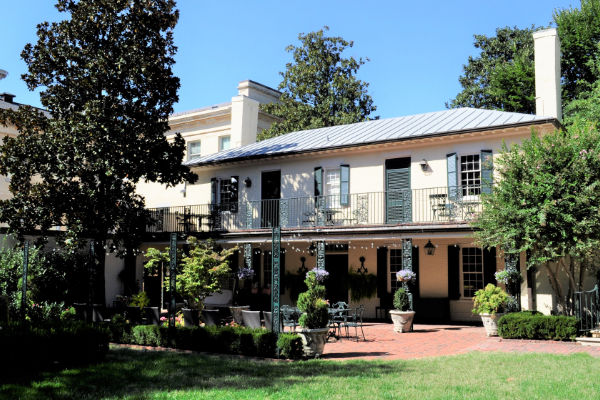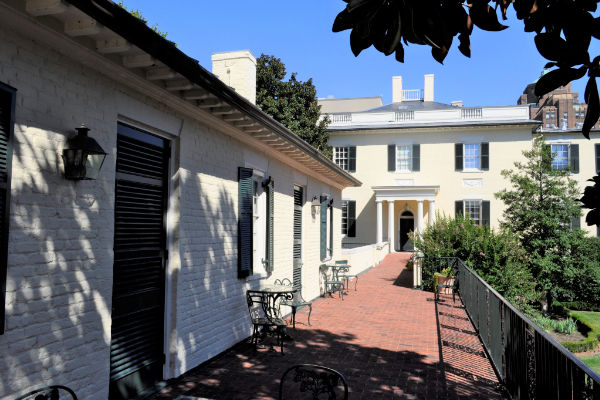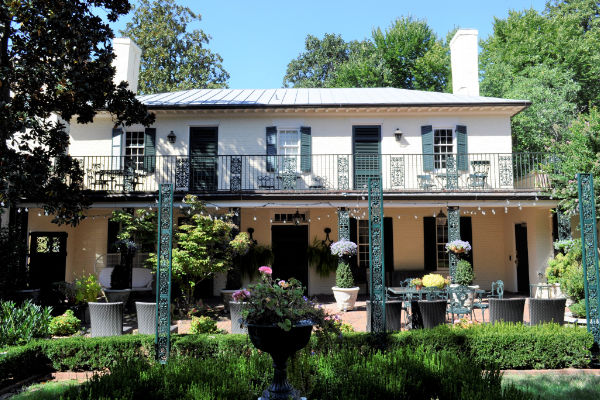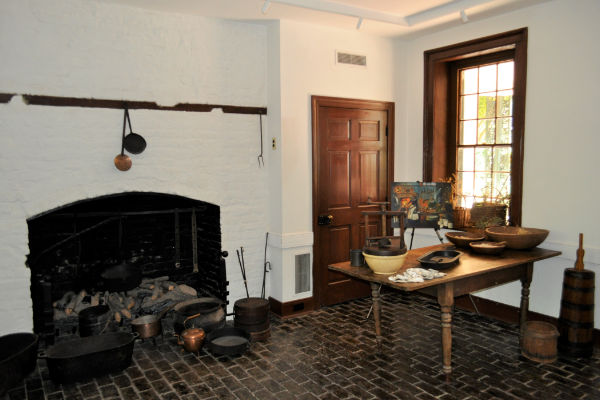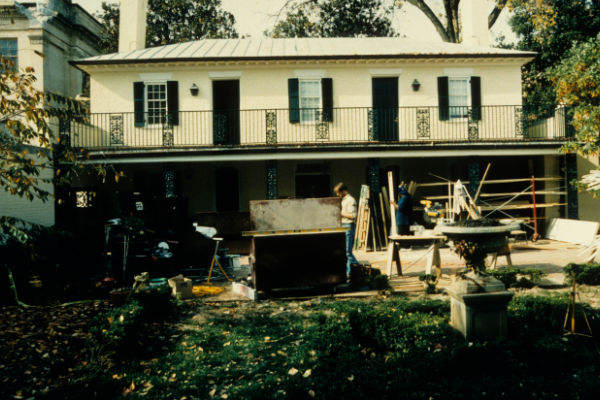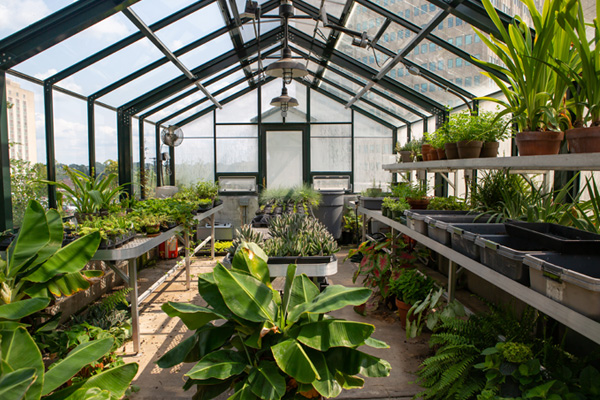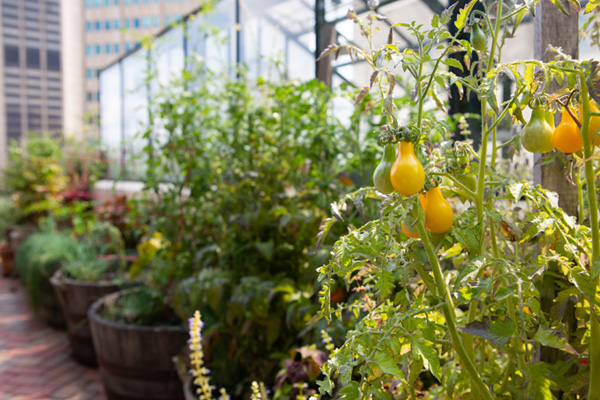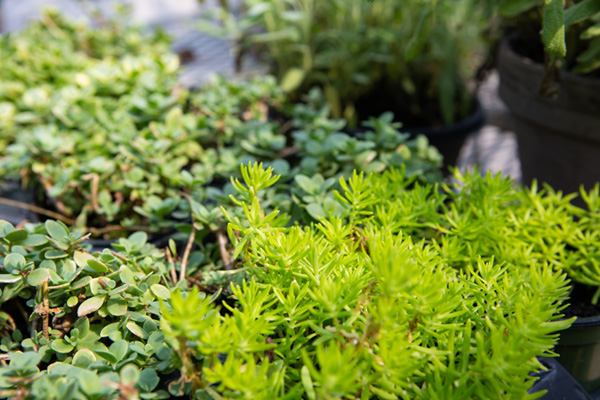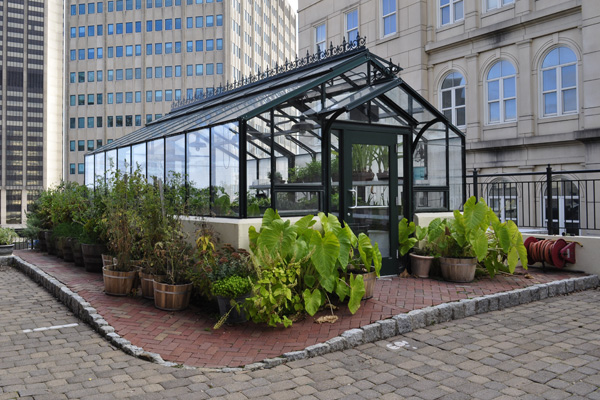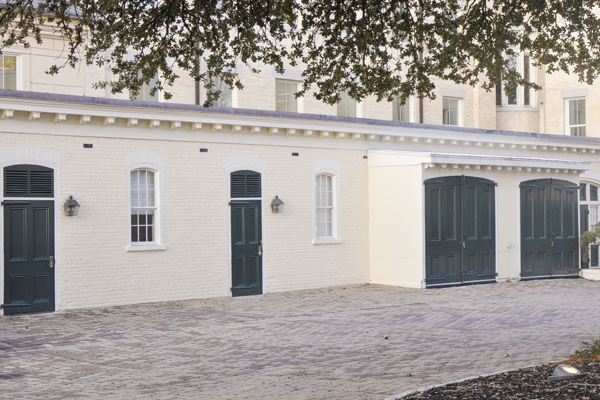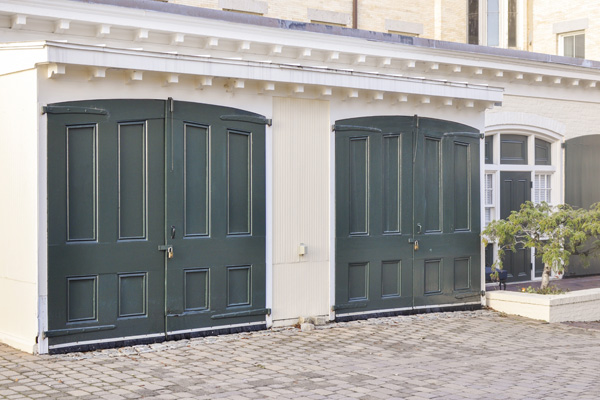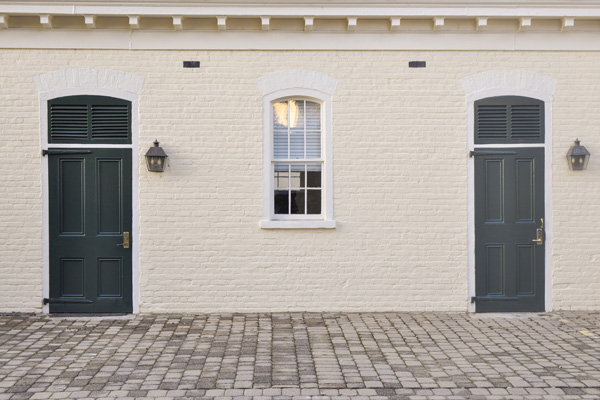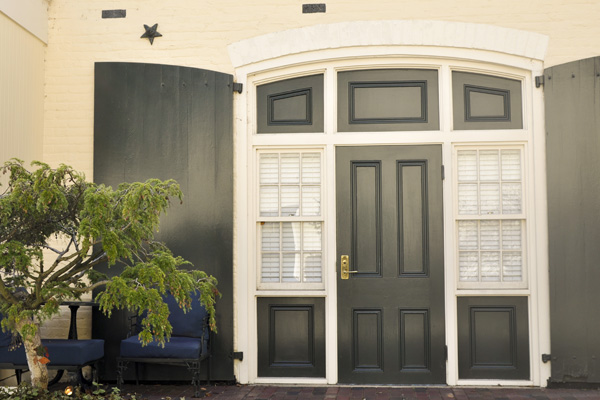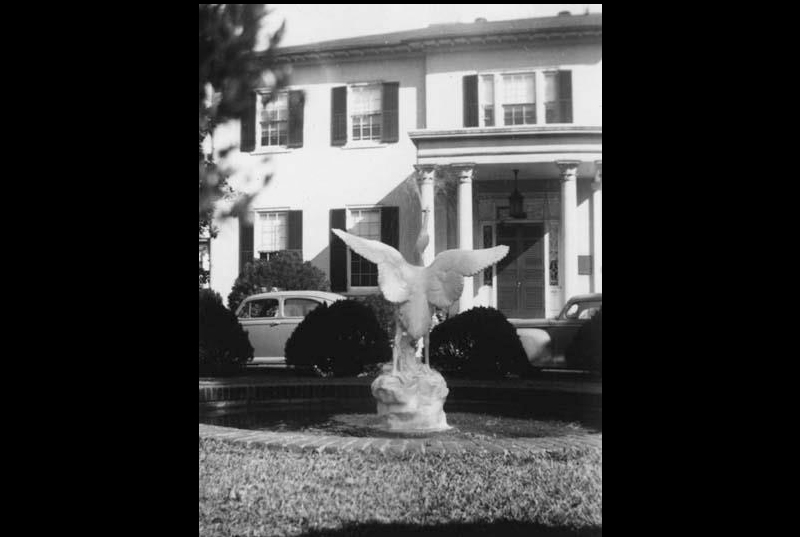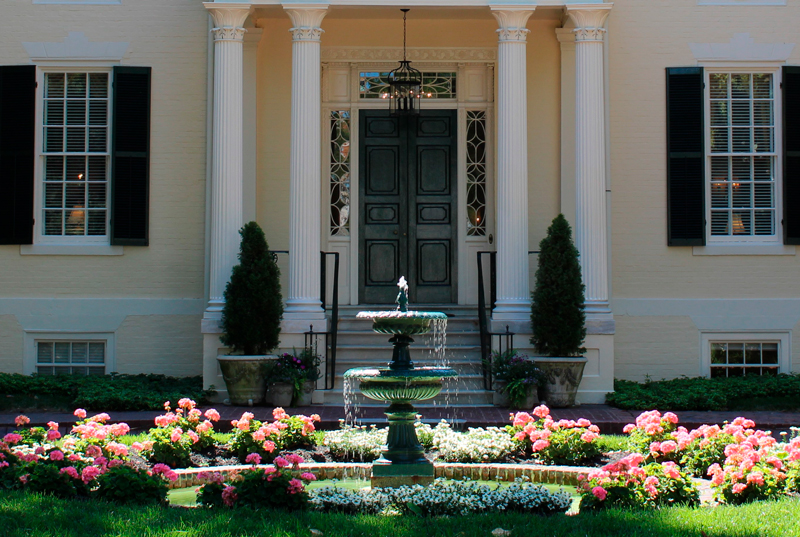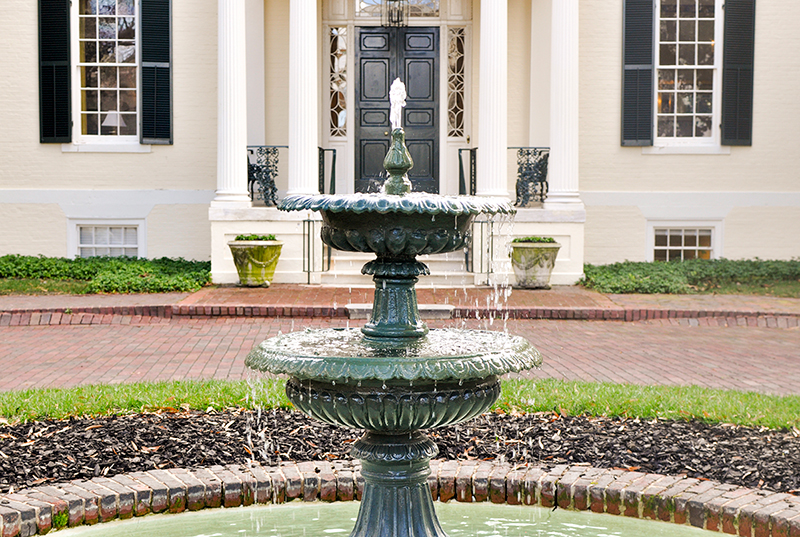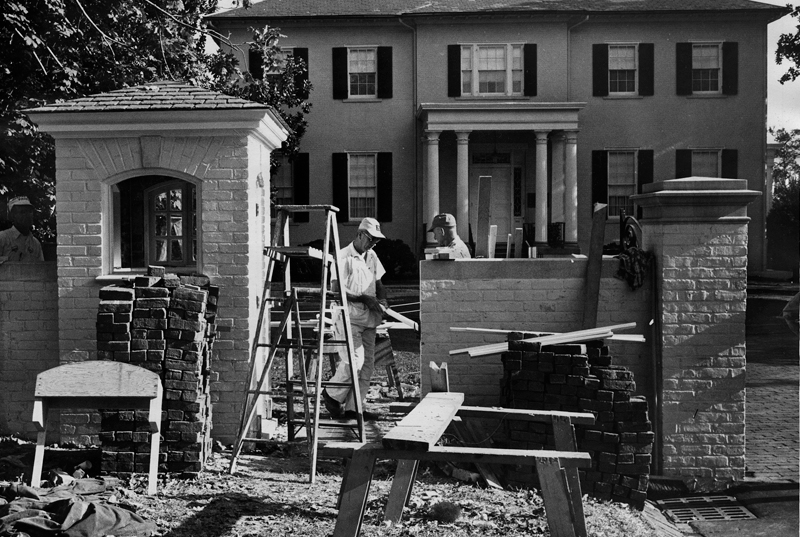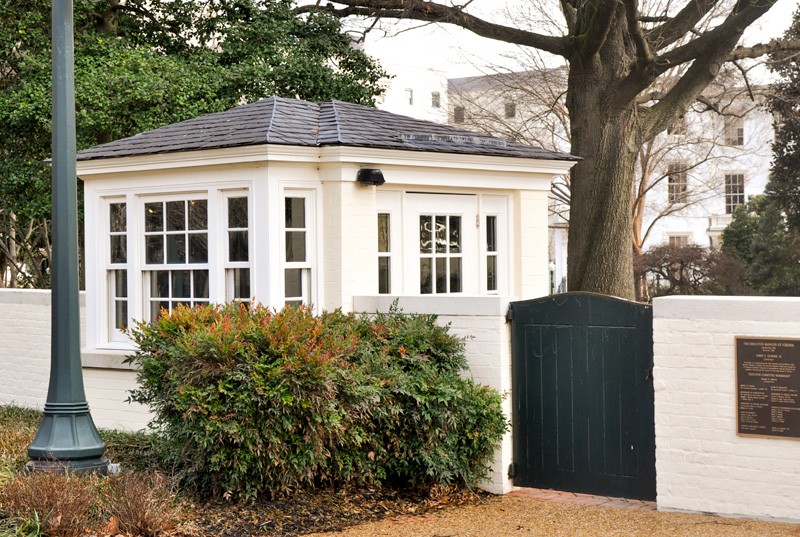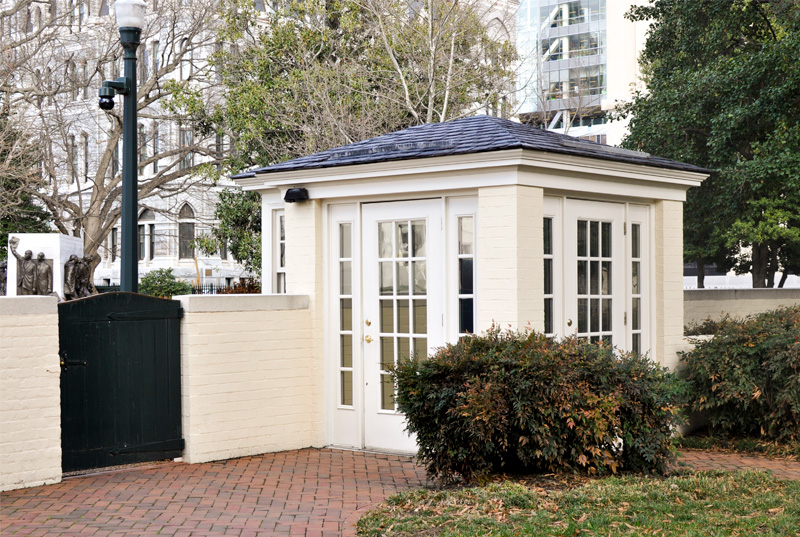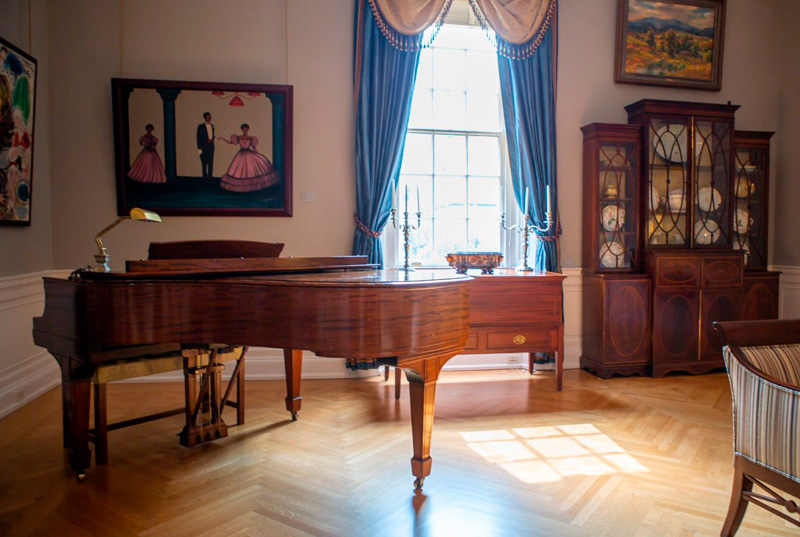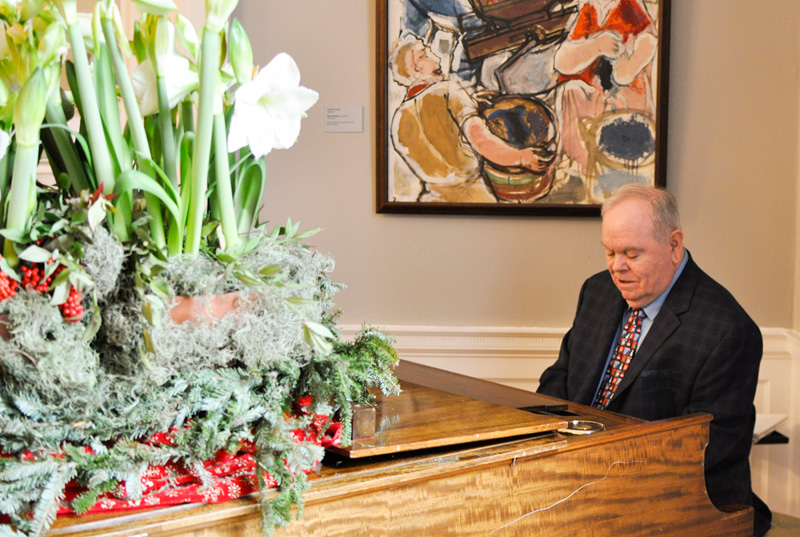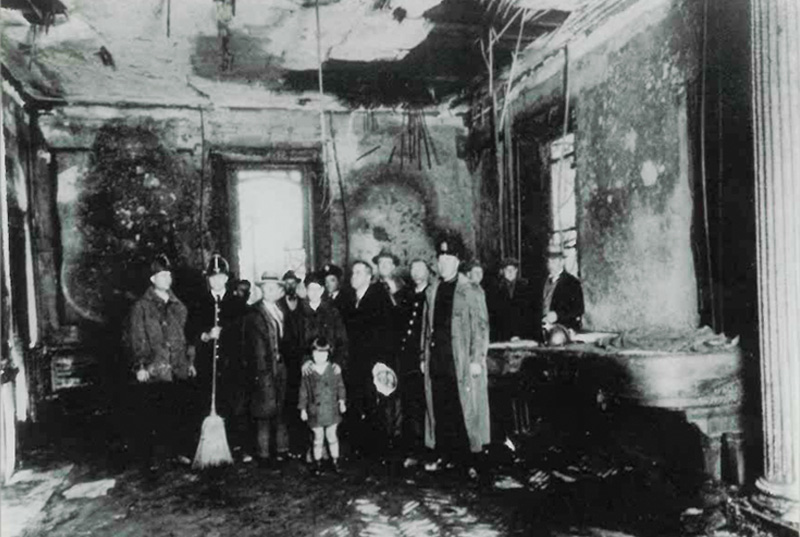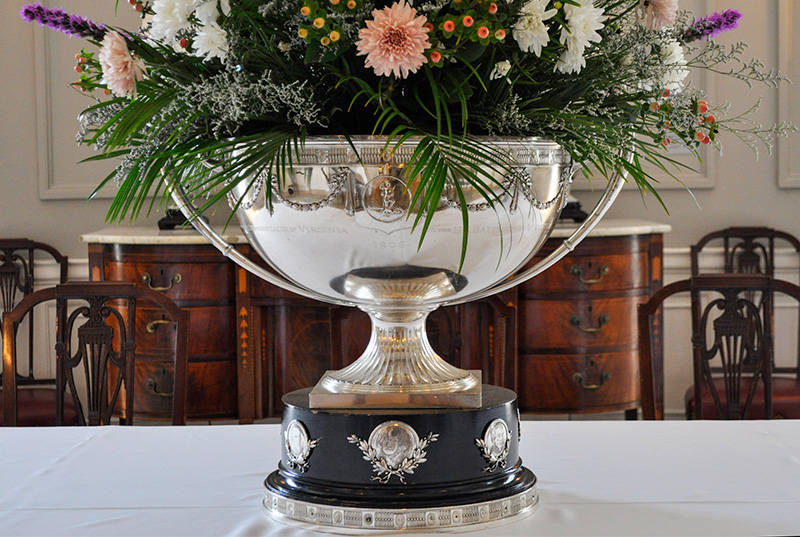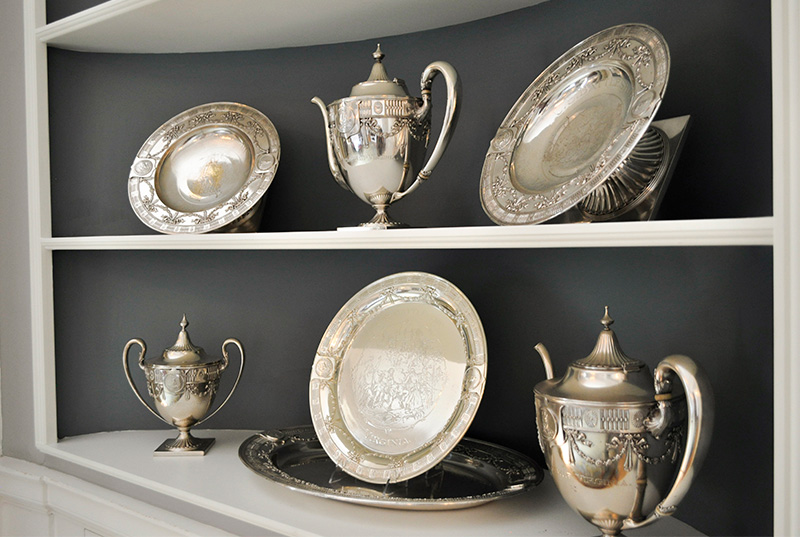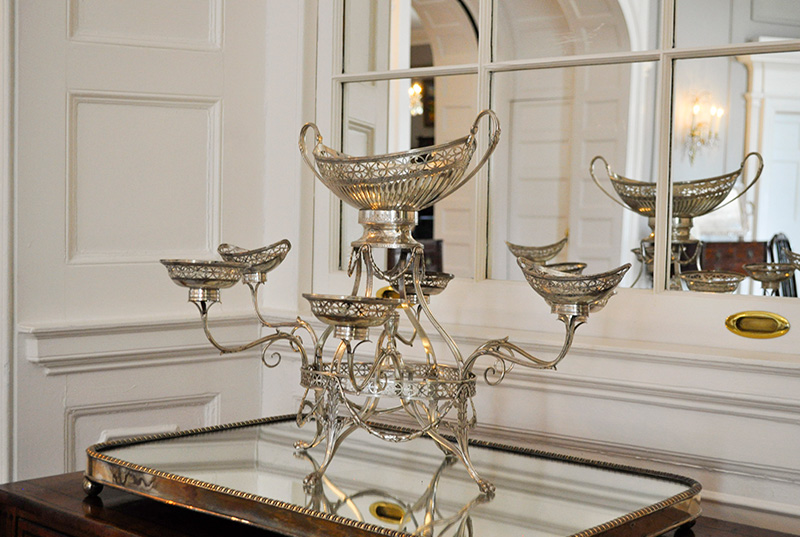Mansion Gardens
Situated behind the Executive Mansion of Virginia, the Valentine-Jackson Memorial Garden and Gillette Garden are beautifully timeless reminders of highly celebrated Virginians. Revered by first families as spaces for reflection, respite and entertainment, the gardens at Virginia’s Executive Mansion are regarded with utmost care and consideration.
Valentine-Jackson Memorial Garden
The Valentine-Jackson Memorial Garden commemorates the lives of the enslaved Valentine and Jackson families, recognizing and honoring the sacrifices and contributions they, and all enslaved African Americans, made to Virginia. Brought to Richmond with the household of Governor David Campbell in 1837, members of the Valentine and Jackson families corresponded by letter with their families still living and working on the Campbell’s farm in Abingdon, VA. Excerpts from their poignant letters are highlighted along the Valentine-Jackson Memorial Garden walls.
Gillette Garden
Constructed in 1956 and restored in 1999 by the Garden Club of Virginia, the Gillette Garden at Virginia’s Executive Mansion was designed by Richmond landscape architect Charles Gillette. A space once designated for the current governor’s livestock, the Gillette Garden today is occupied by dogwood blossoms, English boxwoods, Virginia cedars, azalea, two crepe myrtles and a striking statue of the Greek nymph Daphne, along with native plant and flower varieties.
90 YEARS OF VIRGINIA HISTORIC GARDEN WEEK
On Friday, April 21st the Executive Mansion celebrated the Garden Club of Virginia's 90th annual Historic Garden Week by offering tours of the Mansion grounds, garden and greenhouse to over 600 visitors from across the state and nation. Members of Boxwood Garden Club created gorgeous interior arrangements using Virginia's native flora, clipped from their gardens and Capitol Square. Thanks to these women and our DGS groundskeepers Tony Griffin and Alexander Bigger, the Executive Mansion was in full bloom for the festivities.
The Cottage and Historic Kitchen
The Cottage, which houses the historic kitchen at the Executive Mansion of Virginia, has adopted several uses since its construction in 1813. The Cottage is an important part of the Executive Mansion grounds and is an important reminder of Virginia’s past. We remember the Jackson and Valentine families who lived in the Cottage and whose stories are memorialized in the Valentine-Jackson Memorial Garden. These families were enslaved and lived in the Cottage before the Civil War.
Utilized primarily by enslaved African Americans, the brick Cottage on the property included a kitchen on the first floor, which was used to prepare the first family’s meals, with living quarters situated above it. The historic kitchen within the Cottage was equipped with a wood burning fireplace and stocked with non-perishable Virginia crop staples for cooking.
Beginning in the 1840s, several kitchen functions were relocated to the basement of the main house. By the start of the Civil War the majority of the cooking was done in the basement of the Executive Mansion and the Cottage’s kitchen quarters then served as a laundry facility.
Entering the early part of the twentieth century, the Cottage and kitchen quarters were converted into a guest house and have since served various purposes for Virginia’s first families who have resided in the Mansion.
Greenhouse
Since the Mansion’s early days, the grounds included a greenhouse where the First Lady of Virginia could grow flowers and potted plants to decorate the home.
First Lady Sally Buchanan Floyd requested the construction of two greenhouses during her residence at the Executive Mansion between 1849 and 1852. Since then, the greenhouse has endured numerous evolutions: surviving the fire that scorched Capitol Square at the end of the Civil War and undergoing restoration in the 1950s, removal in 1998 and reconstruction in 2012. Today, the greenhouse provides crops that are homegrown, fresh-picked and used almost daily by our chefs in the kitchen.
“Working in the greenhouse is such good therapy,” says Tony Griffin, DGS superstar and the Executive Mansion’s go-to-guy for all things gardening.
Carriage House
From the early planning stages of the Executive Mansion, the inclusion of the carriage house and stables was non-negotiable; these spaces were absolute necessities for Virginia’s earliest governors, as horse drawn carriages were the main method of transportation through the early 1900s.
As automobiles began to outnumber horses and buggies, the Executive Mansion’s carriage house and stables were converted into garages. The shift from housing horses to cars resulted in surplus space, allowing for the modification of the carriage house into flexible rooms to be used at the governor’s discretion. Over the years, these rooms have acted as office spaces and storage areas.
Historical Features
Fountain
The fountain at the center of the circular drive at the Executive Mansion is thought to have originated as a fishpond built during the Kemper administration in the 1870s. Since its construction, the fountain has undergone several changes. In 1891, the ornamental centerpiece was a swan, replaced in 1932 with a heron by Governor Pollard. The two-tier, cast-iron Roman fountain that sits in the drive today was given to the Mansion during the Robb administration in the 1980s.
Guardhouse
Before Governor Almond’s (1958-1962) wife, Josephine Minter Almond, insisted on building a guardhouse in front of the Mansion, Capitol Police withstood Virginia’s weather conditions twenty-four hours a day, seven days a week while protecting the first family and Virginia’s home. In 1999, the original guard house was replaced with a larger structure that is still standing today.
Steinway Piano
In 1926, Governor Trinkle’s five-year-old son Billy set fire to the family Christmas tree with a sparkler. The fire broke out in the ballroom and caused severe damage to a significant portion of the first floor. The next governor, Harry Byrd, decided he wanted to replace the damaged piano. After discovering that there were no funds available for the replacement, he sold the state limousine that had been provided to him and used the profit to buy the Steinway piano that is still in the ballroom today.
USS Virginia Silver Service
The silver service was given to the USS Virginia by the Commonwealth of Virginia in 1906, in keeping with the tradition that a ship’s silver service be donated by the state honored with its name. Built by Newport News Shipbuilding, the USS Virginia was launched in April 1904 and commissioned in April 1906, serving as one of the battleships of the “Great White Fleet”. It was decommissioned in 1920, and later purposefully sunk in the aerial bombing tests off Cape Hatteras.
After a visit to the South Carolina Governor’s residence, First Lady Josephine Almond was highly impressed with the display of silver from the USS South Carolina. This visit led her to research and ultimately discover that the USS Virginia silver service had been transferred to the USS Richmond, then to the USS Roanoke until it was decommissioned, and had since been in temporary storage in San Francisco. After Mrs. and Governor Almond fought hard for its return, the Navy finally agreed to have the silver sent back to Virginia in 1958. It wasn’t until 2004 that Virginia officially obtained ownership of the silver service from the U.S. Navy, solidifying the set as one of the Executive Mansion’s most valued heirlooms.
The 51-piece silver service is just barely incomplete, the only missing piece being the key to the cigar humidor which rests in the Old Governor’s Office. The eight-gallon punch bowl features intricate details, with an etching of the Virginia Capitol and an ebony base with seven of the eight Virginia born U.S. presidents lining the circumference of the piece.
